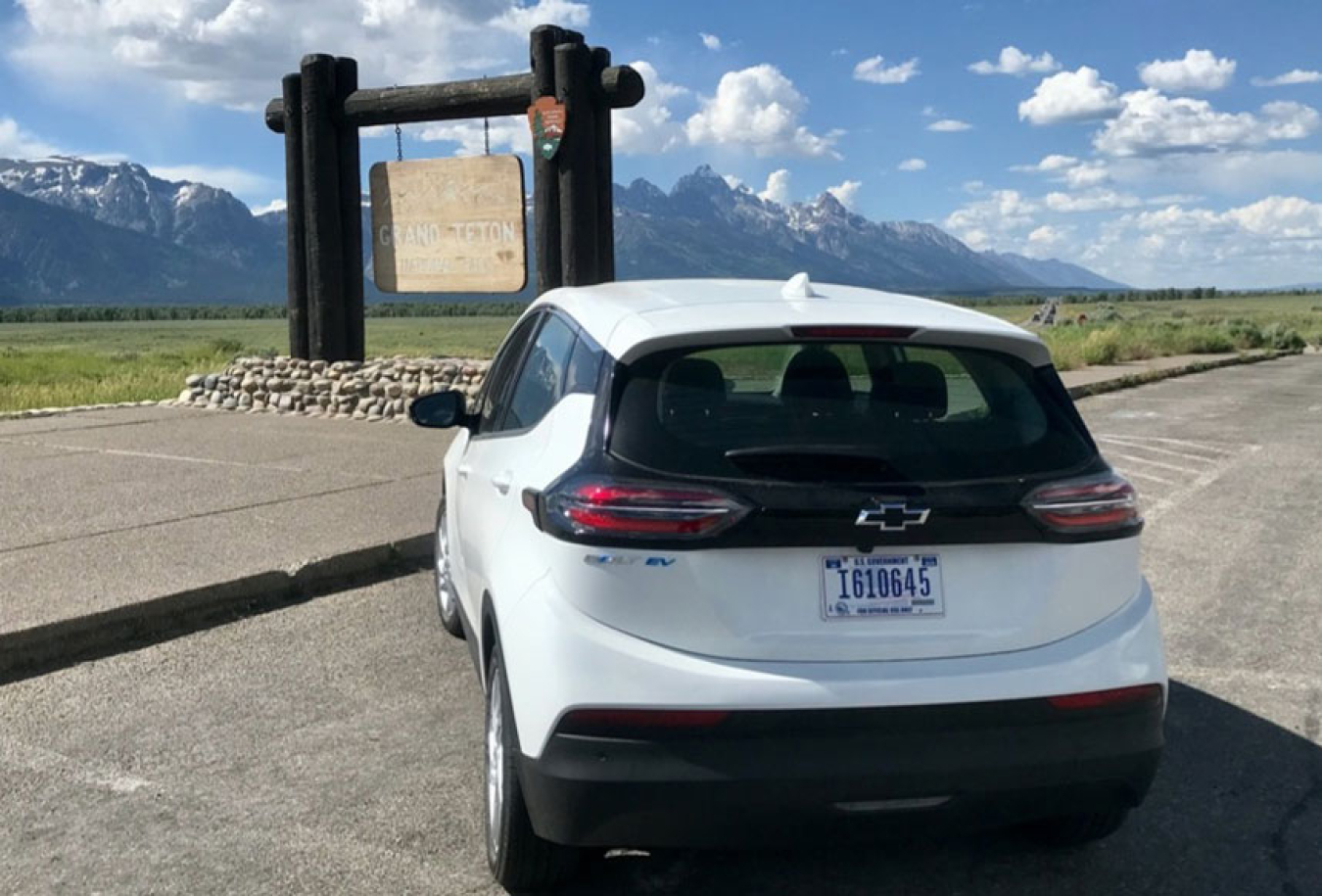Grand Teton National Park (GRTE) is rising above its spectacular mountain scenery and extraordinary wildlife by evaluating alternative solutions for a greener fleet that aligns with its pristine environment. To accelerate the transition from internal combustion engines to electric vehicles (EVs), GRTE worked closely with the Federal Energy Management Program (FEMP) and National Renewable Energy Laboratory (NREL) to evaluate their fleet inventory and operations. The focus of this evaluation was to develop an electric vehicle supply equipment (EVSE) site assessment or deployment plan near GRTE Headquarters.

A successful fleet transition plan cannot be drafted without recognizing the fleet electrification challenges the park faces, such as long-distance driving, seasonal operations, and cold winter months. The future EV and EVSE acquisition and EVSE deployment plans must overcome these barriers to meet the fleet electrification requirements of Executive Order 14057.
"The park has many more vehicles that are candidates for ZEV than we would have guessed without taking the time to complete the ZPAC tool."
In collaboration with FEMP and NREL, GRTE used the Zero Emission Vehicle Planning and Charging (ZPAC) tool to identify EV opportunities at the Moose General area, including 76 potential zero emission vehicle (ZEV) candidates out of 177 fleet vehicles. Existing building electrical capacity, parking layouts, and fleet standard operating practices were evaluated during a Tiger Team site assessment to determine the optimal number, type, design, and preferred siting for EVSE. NREL engineers recommended the installation of 26 additional EV charging ports across the Moose General area and detailed the technical requirements and cost estimates in a final report to the site.
Project Highlights
- A mix of 76 potential zero emission light duty vehicle (LDV) and medium duty vehicle (MDV) candidates were identified as part of the EV adoption plan.
- Thirteen dual-port Level 2 EVSE units were proposed to meet the energy needs of future ZEVs in the fleet.
Key Benefits
- FEMP-GRTE-NREL collaboration provided insights to build EV charging infrastructure that can be replicated at other areas within the park.
- GRTE’s personnel gained technical knowledge and expertise to work with their utility partner to implement the proposed EVSE deployment plans.
- As EVs enter the fleet and EVSE are deployed, drivers will experience first-hand how EVs can meet the transportation fleet requirements and help the fleet achieve its sustainability goals.
Impact
GRTE’s adoption of EVs was motivated by the many positive environmental impacts of electric mobility, including reduced carbon dioxide emissions, improved air quality, and lower noise levels of EVs compared to conventional combustion engine vehicles.
Learn More
Read the full NREL report, Grand Teton National Park Federal Fleet Tiger Team EVSE Site Assessment.

